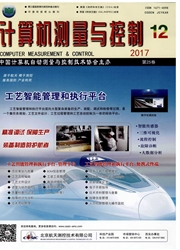

 中文摘要:
中文摘要:
针对MBR膜污染因子较为复杂且各因子之间相互交叉,首先用主元分析法实现输入变量的降维和去相关,求出影响膜污染最为明显的三大因素:混合液悬浮固体、总阻力和操作压力,接着用BP神经网络建立这三大参数与表征膜污染程度大小的膜通量之间关系的MBR智能仿真系统模型,同时针对BP网络自身的缺陷,引进遗传算法,采用GA优化BP网络权值和阈值,最终建立基于GA—BP神经网络的MBR膜污染预测模型;网络训练时使用的数据是在不同操作条件下,采用孔径为0.2μm的聚偏氟乙烯微滤膜处理生活污水时得到的膜通量实验数据,最后用训练好的GA—BP神经网络对膜通量进行预测;研究结果表明,与传统BP算法相比,GA—BP神经网络算法能更快实现收敛,提高运算速度以及膜通量预测的准确度。
 英文摘要:
英文摘要:
According to membrane fouling in MBR process caused by many complex and interactional factors, first, principal component analysis is used to reduce the dimensions and correlations of input parameters, and solves for the most obvious three factors affecting on mem- brane fouling: the mixed liquor suspended solids , total resistance and the operating pressure. Second, MBR intelligent simulation system model for the relationship between these three parameters and membrane flux characterizing the degree of membrane fouling is established with BP neural network. At the same time, for BP neural network with its defects, genetic algorithm (GA) is introduced and is used to opti- mize the weights and thresholds of the BP neural network. Finally, MBR membrane fouling forecasting model is based on GA--BP neural network. The experimental data of an orthogonal design for a micro--filtration device (0. 2μm polyvinylidene fluoride (PVDF) micro--fil- tration membrane for sewage treatment) are used as the sample data for training the GA--BP neural network. At last, the performance of the optimized network is tested and assessed by forecasting the membrane flux of the micro--filtration devices with prediction data. The re- sults show that, compared with the traditional BP algorithm, the GA--BP neural network algorithm achieves faster convergence speed and improves computing speed and the membrane flux prediction accuracy.
 同期刊论文项目
同期刊论文项目
 同项目期刊论文
同项目期刊论文
 期刊信息
期刊信息
